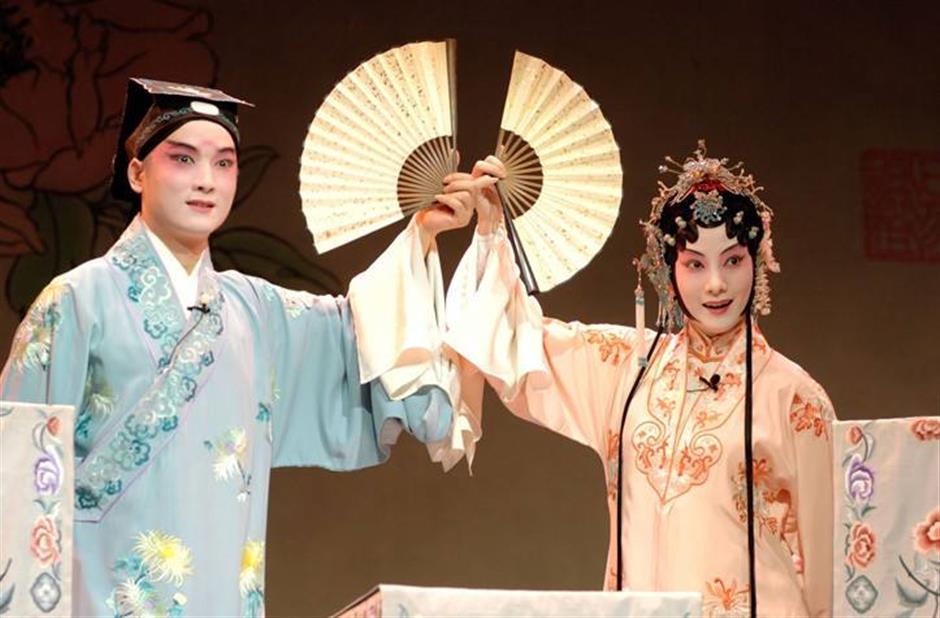Tang, Shakespeare had amazing similarities
During 2018 Spring Festival, my mother took me to the Shanghai Grand Theater and I watched the Kunqu Opera “The Peony Pavilion” for the first time. “The Peony Pavilion” is the magnum opus of Tang Xianzu, an outstanding playwright of the Ming Dynasty (1368-1644). It is a masterpiece in Chinese traditional opera history. The opera tells the love story of Du Liniang, a girl from an aristocratic family, and Liu Mengmei, a poor young scholar. With “The Peony Pavilion” and three other operas, Tang was recognized as one of the most prominent playwrights in Chinese history.

Shi Tang is a Grade 8 student at Shanghai Shixi Junior Middle School.
Prior to watching this performance I had read quite a few plays written by William Shakespeare. I was deeply fascinated by the well-developed characters with complex human natures that Shakespeare created. Since the two outstanding playwrights were contemporary, I connected these two playwrights with each other. In the 17th century, as “The Peony Pavilion” was in vogue among the folks in China, in distant England, audiences were enjoying Shakespeare’s plays in the theaters. Although the two were probably not aware of each other’s existence and they had distinctly different cultural backgrounds, there was considerable similarities in their works.
Both Tang and Shakespeare’s works resonate with human emancipation and it laid a foundation for their common values. Although political corruption was rampant in the Ming Dynasty, the concept of capitalism germinated and people’s own consciousness were aroused.
Many people had started to cast doubt on the rigid feudal ethics code which suppressed human nature and imposed strict restrictions on the public. Tang believed that opera came from emotions. The quintessence of opera was to express emotions and should respect human beings’ congenital desires. Tang’s opinion resonated with the public at that time. And in Elizabethan England, in the wake of the rise of the new bourgeoisie and the Renaissance, Shakespeare stood up to the oppression of theocracy through writing. He thought a person’s worldly needs and wants were reasonable and that was an incontestable rule in the human society.

“The Peony Pavilion” is the magnum opus of Tang Xianzu, an outstanding playwright of the Ming Dynasty (1368-1644). It is a masterpiece in Chinese traditional opera history.
Under feudalism, women’s status was inferior to men’s, and the restrictions that were placed on women were especially tight. Another similarity between Shakespeare and Tang is that they both paid close attention to women’s destinies and inner worlds. “The Peony Pavilion” embodies the very preliminary stage of feminism in ancient China. The protagonist, Du was a young girl from a wealthy and prestigious family. She appreciated the beauty of the nature and love stirred in her. However, according to the feudal ethics code, young women were not permitted to go out freely and they could not socialize as they wish. Almost every woman’s marriage was determined by her parents while their own feelings were completely ignored. Those rules made Du quite depressed. One night after hanging out in a garden on a spring day, she dreamed about a poor young scholar called Liu and madly fell in love with him. When she woke up, she did not know how to seek the man she had encountered, and soon died from heartache. Three years later, Du’s spirit found Liu and asked him to open the coffin so that Du could come back to life. Du refused arranged marriages and managed to persuade the emperor to authorize her marriage with Liu. Du died because of love and revived because of love. She used her life to fight against unreasonable feudal morals and kept pursuing true felicity. The play’s stark subject, quaint plots and flowery dictions represent Tang’s advanced attitude toward women and excellent artistic attainment.
In Shakespeare’s era, capitalism in Britain was thriving, people’s consciousness was much more liberal than their counterparts in China. Compared to Oriental women who have suffered long-term oppression, Western women tended to be freer and more outgoing. Therefore, the women in Shakespeare’s plays do not need to pursue felicity in their dreams. They have greater possibility to pursue true love and their characters embody a more distinct sense of woman independence. For example, in “Merchant of Venice,” Portia was born into a wealthy family and many men seek her hand in marriage. Portia had clear opinions when determining her marriage and eventually she marries a Venetian young man named Bassanio, who is not very rich but obtains her fondness. When Bassanio’s friend Antonio encounters mortal danger because he is not able to repay the loan, Portia gives him money generously. And in the lawsuit, pretending to be lawyer, Portia ensures justice prevails and saves Antonio’s life with her extraordinary intelligence and courage.
The women characters created by Tang and Shakespeare dare to pursue true love and choose their life-long companion on their own volition and show their exceptional competence confidently. Those are significant signs of women’s awakening.
In Tang’s “The Purple Hairpin,” the protagonist falls in love with a young man at the first sight. She positively expresses her fondness to the man, trying to win his love and refuses to accept an arranged marriage. In Shakespeare’s classic “Romeo and Juliet,” Juliet takes the risk of getting evicted but vows to marry Romeo. Actually her resolution and fortitude even surpasses Romeo’s. Although these women figures are diverse in terms of their settings, personalities and fates, all of them are epitomes of women with intense wishes for liberty and admirable guts to fight against their destinies.















